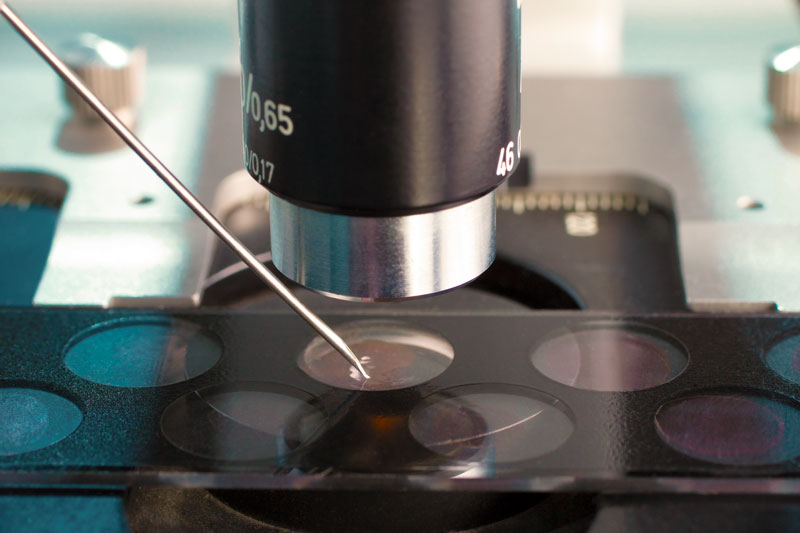EVALUATION AND SELECTION OF EMBRYOS – METABOLOMICS
Evaluation and selection of embryos
During embryo stay in the laboratory, their development and morphology are monitored, so that the best embryos can be selected during embryo transfer (2-3 days after egg collection or 5-6 days in the case of blastocysts).
The chances of getting pregnant are directly related to the quality of the embryos that will be transferred to the uterus. On the other hand, as the number of embryos transferred increases, the likelihood of multiple pregnancies increases, with all the complications involved.
In addition, due to the limitations of the legislative framework in many European countries regarding the number of eggs that can be fertilised or the number of embryos that can be transferred, the need to choose the most suitable embryo is even more urgent. The quality of the embryo depends on:
-The quality of the genetic material, namely the eggs and the sperm
-The ovarian stimulation protocol
-The quality of embryological laboratory
The criteria we use to classify embryos are mainly two: their growth rate and their morphology.
The rate of embryo development is related to the number of embryonic stem cells-blastomeres. Thus, 42-44 hours after fertilisation, that is, on the 2nd day after egg collection, embryos should show 2-4 blastomeres, whereas 69-72 hours after fertilisation, that is, on the 3rd day after fertilisation, the number of blastomeres should be 6-8.
The morphology of the embryos is characterized by the presence or not of cytoplasmic fragments as well as by the shape of the blastomeres. Embryos without cytoplasmic fragments and with spherical, isomerized blastomeres have a statistically greater chance of implantation than those with a high percentage of cytoplasmic fragments and unequal blastomeres.
In recent years, there has been a great deal of research around the world to find more accurate and objective ways of assessing the quality of embryos, without yet having a better one.






